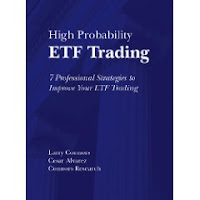If you are going to invest this way, the best thing you can do is work out a system. Develop rules, test them, write them down, and at the end of the year, evaluate your results. If you fail, perhaps give it another year. But after a few years, if you underperform standard benchmarks (eg, the SPY ETF), then either get out of the market, or stop trading, an simply invest in the SPY.

A book like Larry Connor's High Probability ETF Trading is a good place to start. The author presents a straightforward technical trading strategies, mainly based on momentum over longer periods (eg, 200 days), and mean reversion over shorter horizons (eg, 3 days). There's a lot of empirical research that suggests these trends generally exist, in that momentum is one of the famous equity risk factors (from Jegadeesh and Titman), while mean reversion underlies a lot of 'stat arb' strategies. The issue is, can you use these facts to add alpha to a naive strategy of going long and forgetting about it.
In trying to be clever, there are two things going against you at all times. First, there are many nuances to any actual implementation, and if you play around enough something will work if only by chance. Thus, you have to be disciplined when testing these strategies because it is easy to find something if you try hard enough--torture the data enough and it will confess. Second, there are transaction costs. For a retail investor, I would assume a one-way cost of 2 cents a share. Make sure this cost is included in your performance results.
So, Connors' book walks through several such rules (buy if these 5 conditions are true, exit if this one condition holds). You can learn how to test strategies downloading daily Open-High-Low-Close from Yahoo!, and set up a spreadsheet to apply it to the past 5 or even 50 years of daily data. You may not like his specific rules, but it clues one in on what kinds of things people find useful, and if you can test his strategies, you are then in position to create your own, similar strategies.
Most importantly, if you plan on trading more than once a year, you should have a testable system. Maybe it's based on fundamentals, but at least you should have a written record of what you were thinking, and when. The main thing to avoid is investing ad hoc every year,and not learning that you are wasting money and time. Most people are wasting their time at anything innovative: your average poet, screenwriter, trader. The key is to discover if you are in the 'talented tenth' ASAP, because sampling alpha is costly.
So, if you must actively invest, evaluate not just a particular tactic (buy after 2 up days when price is above the 200 day moving average), but the strategy: should you even be actively trading at all? Remember, odds are you will fail as demonstrated by the fact that most retail investors do not outperform the market, and neither do professional money managers. Do not assume that simply trying hard, or wanting it, are sufficient, because every money manager really wants to outperform, and most work quite hard. Don't take it poorly, no one is good at everything, and very few are very good at more than a few things. The key is to find what you are good at so you can do it again and again, and this takes some courageous sampling, a good effort, and then a Hardheaded evaluation.
4 comments:
How much are you being paid to pump Larry Connors book?
You are either guilty of not reading the whole book, did not take the time to analyze the strategies, or do not understand trading.
Sorry to be harsh but after all the excellent content on here you decide to highlight this??
Well, most people trade too much for all sorts of stupid reasons: Cramer, Wall Street Research, CNBC. The simple algorithms presented in that book are testable, and I just wanted to suggest that people methodically evaluate their strategies, most will learn to stop trading. If you learn this by the time you are 30, actually trying strategies, you won't waste time like so many retirees do, trading from retirement until death, learning nothing.
Is market timing really that hard? That's certainly the conventional wisdom, which leads to a learned helplessness among small investors. The biggest advantage a small investor has is maneuverability, and when they adopt the timing is too hard approach, they give up their biggest edge. There's no reason to invest like Magellan when you're not managing billions.
Was it really so hard to see that the market was in trouble after New Century and Bear Stearns collapsed? There was plenty of warning that there was no reason to be in the market . . . And due to the arithmetic of losses (50% up and 50% down is a 25% loss) missed opportunities are easier to make up than losses.
Ok, apologies. My comments were harsh and I should've communicated my thoughts better.
If you analyze his systems it wreaks of optimization, 5 rules with very specific parameters which are in essence dip-buying strategy or (mean-reversion, stat arb depending on who you want to impress)
It's a great strategy with a solid long term edge as shown in testing but is susceptible to large draw down risk. It is similar in strategy to short volatility, great steady returns until you get run over.
I don't think he mentions risk management which is where the key to trading really lies.
You had mentioned Mebane Faber's paper on Market Timing in previous posts and that can be construed not as a market timing system but as a portfolio allocator and risk management overlay.
I wholeheartedly agree with your suggestion and methodology to evaluate any trading strategy.
Post a Comment